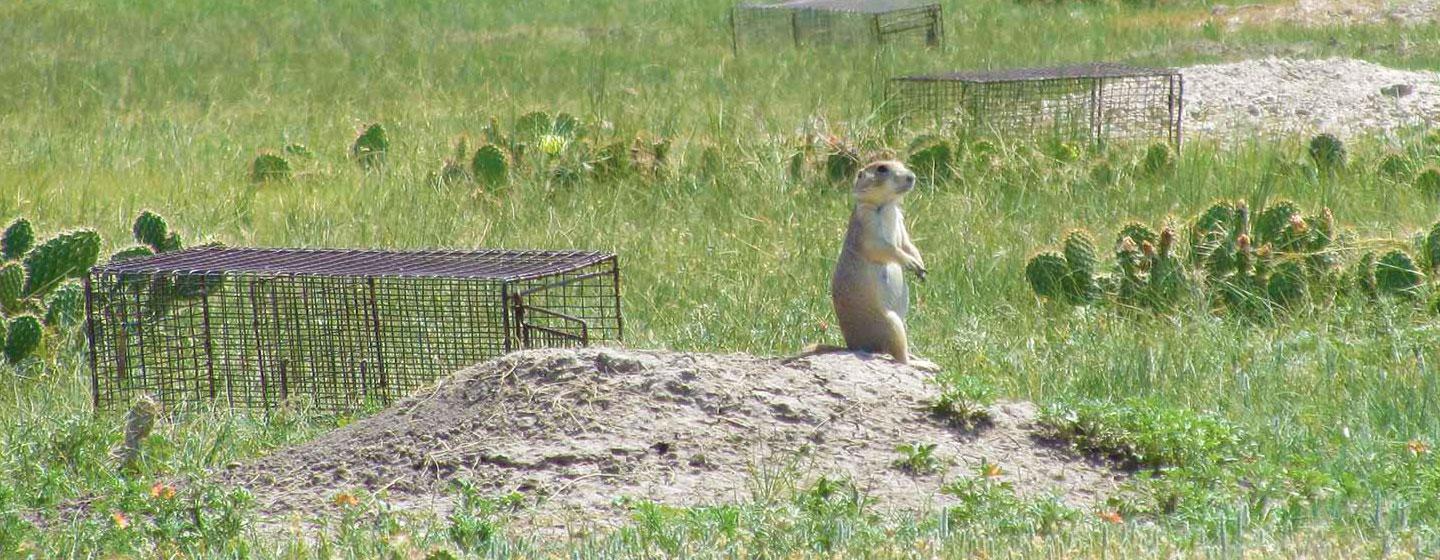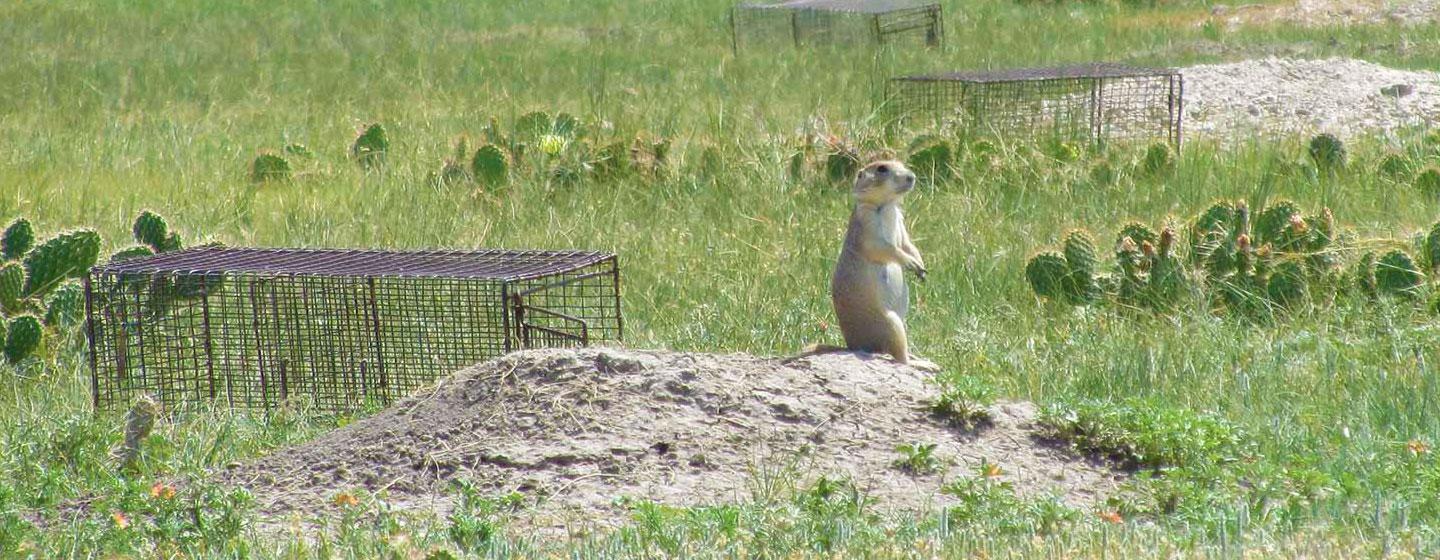
Credit: Dr. Gebbiena Bron, University of Wisconsin
Morris Animal Foundation-funded researchers suspected and have now confirmed that plague vaccine bait, designed to protect prairie dogs and assist with recovery efforts of the black-footed ferret, is readily consumed by thousands of small rodents each year but with no apparent ill effect. Results were recently published in the journal EcoHealth.
"Plague has an enormous impact on prairie dog populations, killing thousands of animals annually. An outbreak can decimate upwards of 90 percent of a prairie dog colony and have a ripple effect on the remaining wildlife," said Dr. Gebbiena Bron, University of Wisconsin, one of the researchers on the project and a Morris Animal Foundation Fellowship Training Grant recipient. "Plague also is a major impediment to the recovery of the endangered black-footed ferret, that prey nearly exclusively on prairie dogs and also are quite susceptible to the disease."
As part of a multi-state field trial of a newly developed oral sylvatic plague vaccine, the team found the vaccine was safe for unintended dinner guests, including myriads of mice – an important finding for the long-term success of a sustainable plague vaccine program.
More than 100 species benefit from the burrow communities built by prairie dogs, either for shelter or for protection from predators. Other animals, like the ferret, prey on prairie dogs as a major food source. Finding new and innovative ways to curb plague in prairie dogs will ultimately benefit wild prairie habitats and animals that live there. This pivotal work assures researchers that the newly developed plague vaccine is safe and does not harm critical prairie ecosystems.
Before the design of a viable vaccine, researchers combatted plague by dusting prairie dog burrows with an insecticide to eliminate fleas, one of the main vectors of the plague. These prevention methods, although moderately successful, were expensive and labor intensive and did not ultimately prevent the spread and occurrence of periodic plague outbreaks. A better prevention method was desperately needed.
The new trial vaccine is working well in prairie dogs but researchers needed to know if the vaccine bait was being consumed by other animals or negatively impacting the ecosystem. As expected, there was high consumption of the bait by several mice species. During 34,900 trap nights and more than 10,000 trap days, Dr. Bron and her team caught 7,763 animals; 3,480 individuals of 15 different species, including deer, canyon, and Western harvest mice. Northern grasshopper mice had the highest bait uptake in the study areas.
The team hoped these rodents also would benefit from consuming the vaccine bait, making them less likely to contribute to the plague cycle. Data indicated this hypothesis was unlikely; blood test data and abundance data revealed no negative or positive effects from the oral vaccine baits in these smaller, non-target species. What the team did find is the plague bait vaccine was safe for these small animals and did not appear to harm the ecosystem.
"Mice and other rodents play a highly significant role in the plague cycle in Western states," Dr. Bron said. "While we would have liked to see these small animals benefit in some way from the vaccine as prairie dogs do, it is important to know that they suffer no adverse effects from consuming our vaccine baits. This is a win for further vaccine studies in the field."
While rodents readily feast on plague bait vaccine, researchers are not worried about the thousands of small rodents leaving little or no bait for the intended dinner guest, the prairie dogs. Prairie dogs, given their larger size and appetite, most likely consume at least a whole bait at a time. To improve bait consumption by the prairie dogs, researchers distribute vaccine bait around sunrise (when the smaller rodents are off duty). This timing provides the prairie dogs more time to consume the bait, reducing the potential for sharing with their nocturnal cousins.
Sylvatic plague is a disease of wild rodents that occasionally spills over into humans and other animal species. The disease is best known for its large impact on the human population in Europe in the Middle Ages, but currently is still endemic in many countries around the world. In the United States, plague occurs in Western states, spread here in the 1900s by infected rats hitching rides on boats.
###
About Morris Animal Foundation
Morris Animal Foundation's mission is to bridge science and resources to advance the health of animals. Founded by a veterinarian in 1948, we fund and conduct critical health studies for the benefit of all animals. Learn more at morrisanimalfoundation.org
Media Contact
Sean Anderson-Vie
[email protected]
@morris_animal
http://www.morrisanimalfoundation.org
Original Source
http://www.morrisanimalfoundation.org/article/plague-vaccine-bait-look-whos-coming-dinner http://dx.doi.org/10.1007/s10393-018-1334-5





